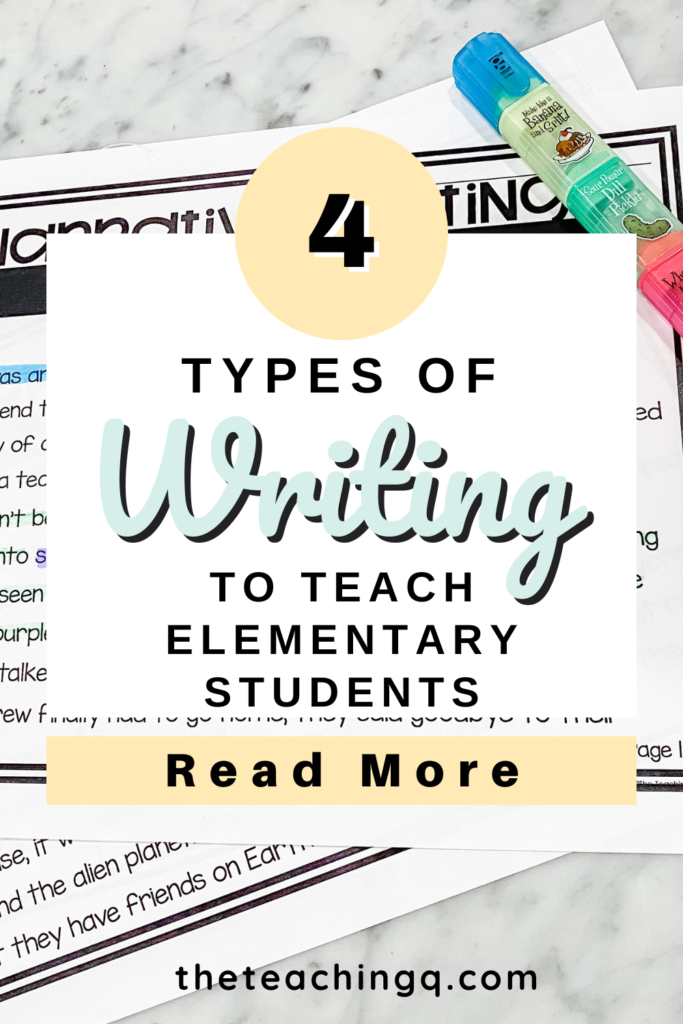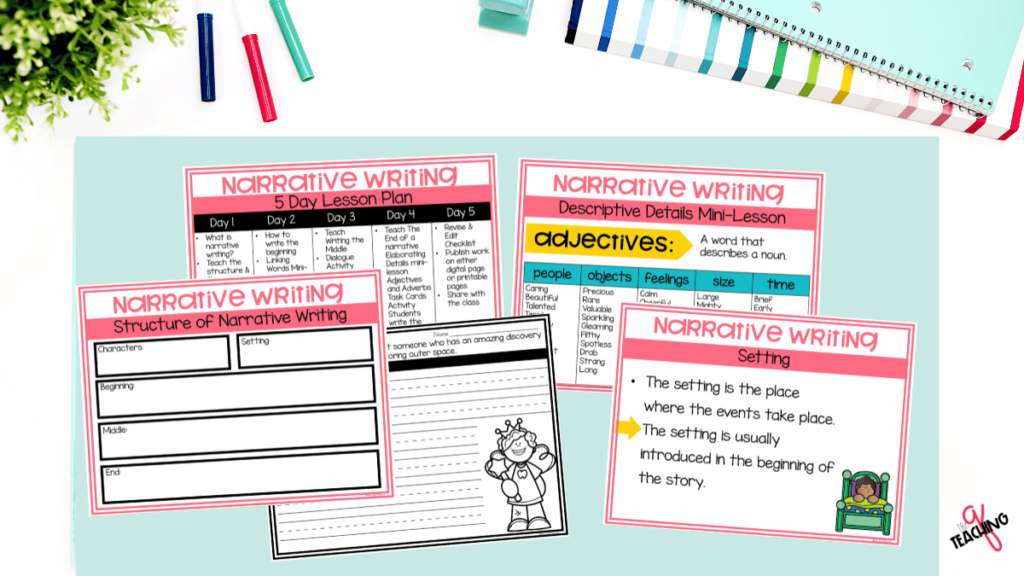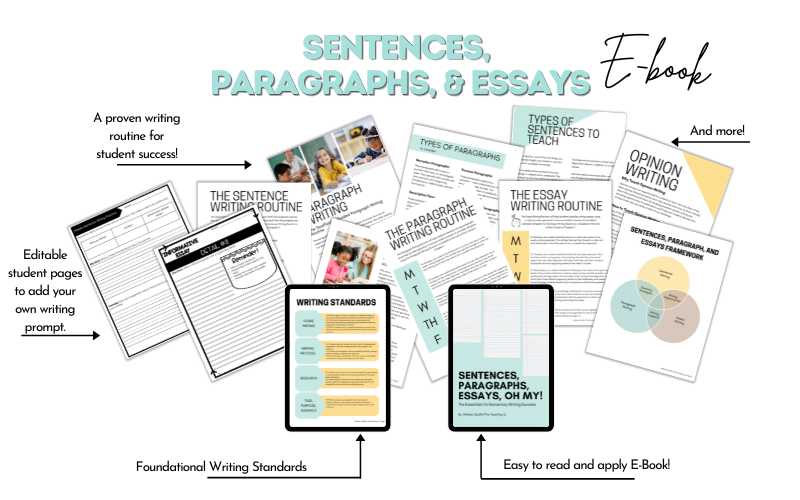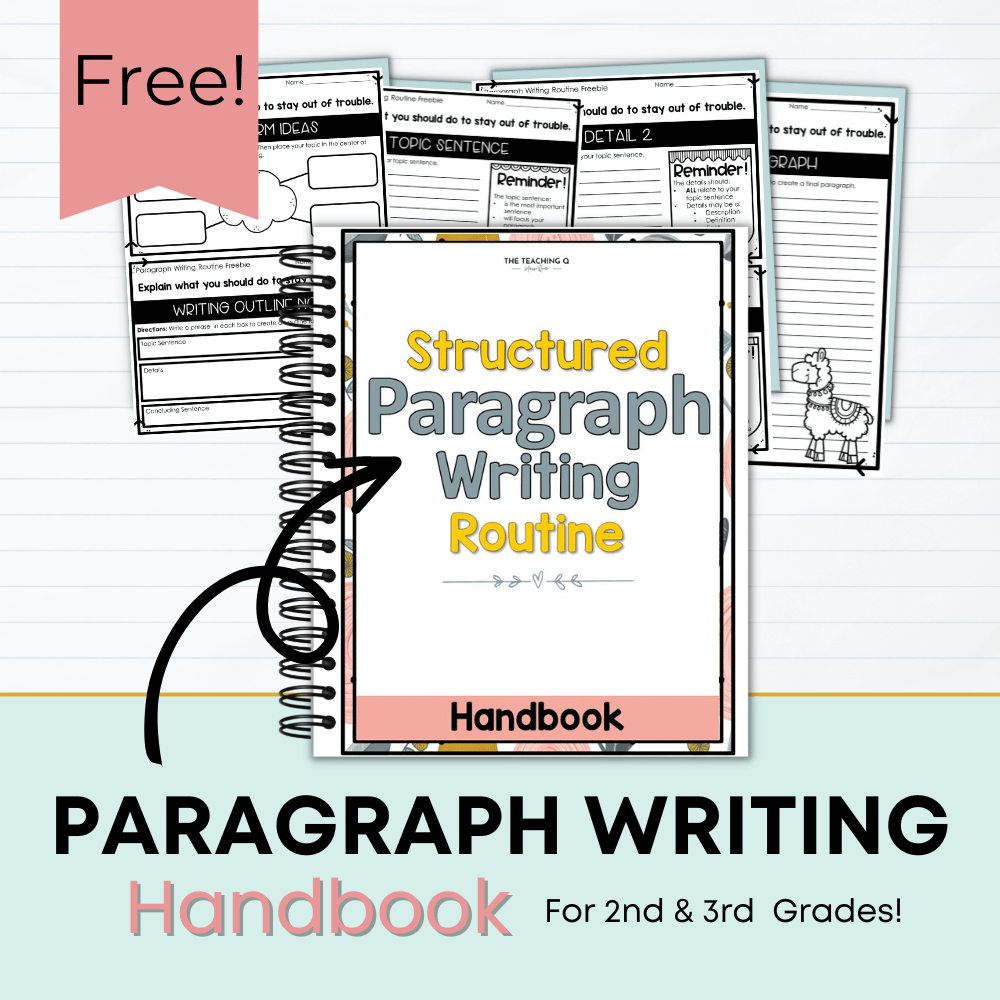Teaching the four kinds of writing, also known as the four writing genres, can be a massive and daunting task when teaching elementary students. So if you’re looking for guidance on teaching the genres, I’ve got you covered.
Writing is a powerful tool for expressing our thoughts, emotions, and ideas. For elementary students, mastering these will enhance their language skills and nurture their creativity and critical thinking abilities.
In this blog post, we will explore four kinds of writing that can captivate young minds and inspire them to become proficient writers. Let’s take a look at them together!

1. Narrative Writing:
Narrative writing takes young writers on an adventure, enabling them to create characters, settings, and plotlines.
Action Steps:
- Encourage elementary students to weave fascinating stories by introducing them to elements like a tale’s beginning, middle, and end. Let their imagination run wild as they draft their narratives, inviting readers into captivating worlds of their own making.
- Encourage them to use descriptive language to paint vivid pictures and to structure their writing with clear transitions. Narratives develop their creativity and enhance their ability to construct coherent and engaging stories.
2. Descriptive Writing:
Descriptive writing allows students to paint pictures with words, evoking sensory experiences and conveying vivid details.
Action Steps:
- Encourage them to describe a person, place, object, or event in a way that captures the reader’s imagination. Encourage using descriptive adjectives, similes, and metaphors to bring their writing to life.
- By honing their descriptive writing skills, elementary students will learn to observe the world around them more keenly, enhancing their ability to express their thoughts and ideas vividly.
3. Persuasive Writing:
Persuasive writing empowers students to voice their opinions, support their arguments, and influence others’ perspectives.
Action Steps:
- Teach them to articulate their beliefs effectively by presenting logical reasoning and compelling evidence.
- Encourage the use of persuasive techniques such as rhetorical questions, emotional appeal, and strong supporting facts.
Elementary students can explore topics that are close to their hearts, such as the importance of recycling or the benefits of reading.
Persuasive texts foster critical thinking and develop communication skills necessary for expressing opinions persuasively.
4. Expository Writing:
Expository writing involves providing information and explaining concepts in a clear and concise manner.
Action Steps:
- Help students explore this style by encouraging them to research and present facts about a topic of interest. Whether it’s writing about animals, historical events, or scientific phenomena, the expository text promotes research skills, information organization, and effective communication.
- Teach them how to create clear topic sentences, use bullet points for listing facts, and conclude with a strong summary.
Expository writing helps students develop their analytical skills and ability to convey complex ideas in a straightforward manner.

Last Thoughts
Mastering the genres opens a world of opportunities for elementary students. By nurturing their narrative, descriptive, persuasive, and expository skills, we empower them to express themselves confidently, think critically, and communicate effectively.
To learn more, I have this blog post on narrative, this one for informative, and this one for opinion.
Also, I have these genre units complete and ready for you to teach.
Jump on over and check them out. (I make them so each step of the process is done for you, ensuring your lessons are dialed. Plus, it will save you time when planning your lessons.)
As educators and parents, let’s give them the tools and guidance they need to embark on this thrilling journey. Encourage their creativity, celebrate their achievements, and watch as they become proficient writers, ready to share their unique voices with the world.

-Melissa


